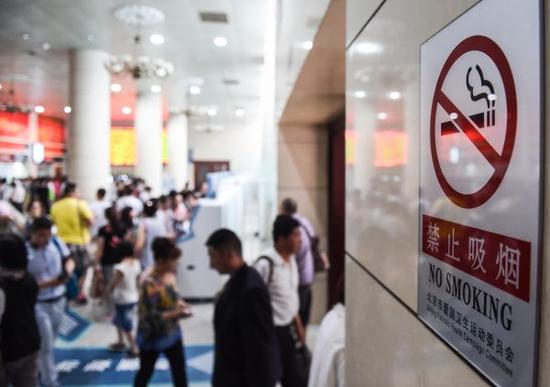|

|
|
China’s National Health and Family Planning Commission is planning to implement a nation-wide ban on smoking in public places by the end of 2017. [Photo/163.com]
|
More smokers in Chinese cities are quitting the habit compared to a decade ago thanks to regional tobacco control regulations and improved public awareness, according to a report released on World No-Tobacco Day on Wednesday.
The quitting rate — which measures the percentage of participants who quit smoking during the survey period — rose from 6 percent in 2006 to 9.2 percent in 2015, Liang Xiaofeng, deputy director of the Chinese Center for Disease Control and Prevention (China CDC), said at a press conference in Shanghai.
“Although the percentage has increased, it is far lower than in other countries,” he said.
The report was based on five surveys performed from 2006 to 2015 in both urban and rural areas, including the cities of Beijing, Shanghai and Kunming as well as rural areas of Yichun in Heilongjiang Province and Tongren in Guizhou Province.
Around 800 smokers and 200 non-smokers in each area participated in each survey, organized by China CDC in cooperation with the International Tobacco Control (ITC) Policy Evaluation Project.
The ITC project is an international research program to evaluate key policies of the WHO Framework Convention on Tobacco Control (FCTC). It is conducting surveys in at least 28 countries covering more than 50 percent of the world’s population.
The surveys in China found people in rural areas lacked knowledge about tobacco’s harmful effects to human health, apart from lung cancer.
The latest survey from 2013 to 2015 showed only 53 percent of rural participants knew smoking may lead to heart disease, 12 percentage points lower than in urban areas.
Only 35 percent of people in rural areas knew smoking could cause stroke, 5 percentage points lower than in urban areas, according to the report. “The results show tobacco control publicity is badly needed to improve public awareness in the countryside,” said Liang.
There are over 300 million smokers and 740 million people exposed to second-hand smoke in China. Over 1 million people die of tobacco use every year, with another 100,000 deaths caused by second-hand smoke exposure, figures show.
China has set a target to reduce the smoking rate among people aged 15 and older to 20 percent by 2030 from the current 27.7 percent, according to the “Healthy China 2030” blueprint issued by the central authorities last October.
Since China ratified the WHO FCTC in 2005, the country has made a number of tobacco control efforts, including banning tobacco advertisements, increasing tobacco taxes and putting forward regional smoking bans.
As of 2016, 18 cities, including Beijing, Shanghai and Shenzhen, had implemented regional smoking bans, and a draft of national tobacco control regulations in public areas is currently being reviewed, according to Song Shuli from the National Health and Family Planning Commission.
“The local bans, which have covered one-tenth of our country’s total population, have provided reference for national legislation on tobacco control,” said Song.
